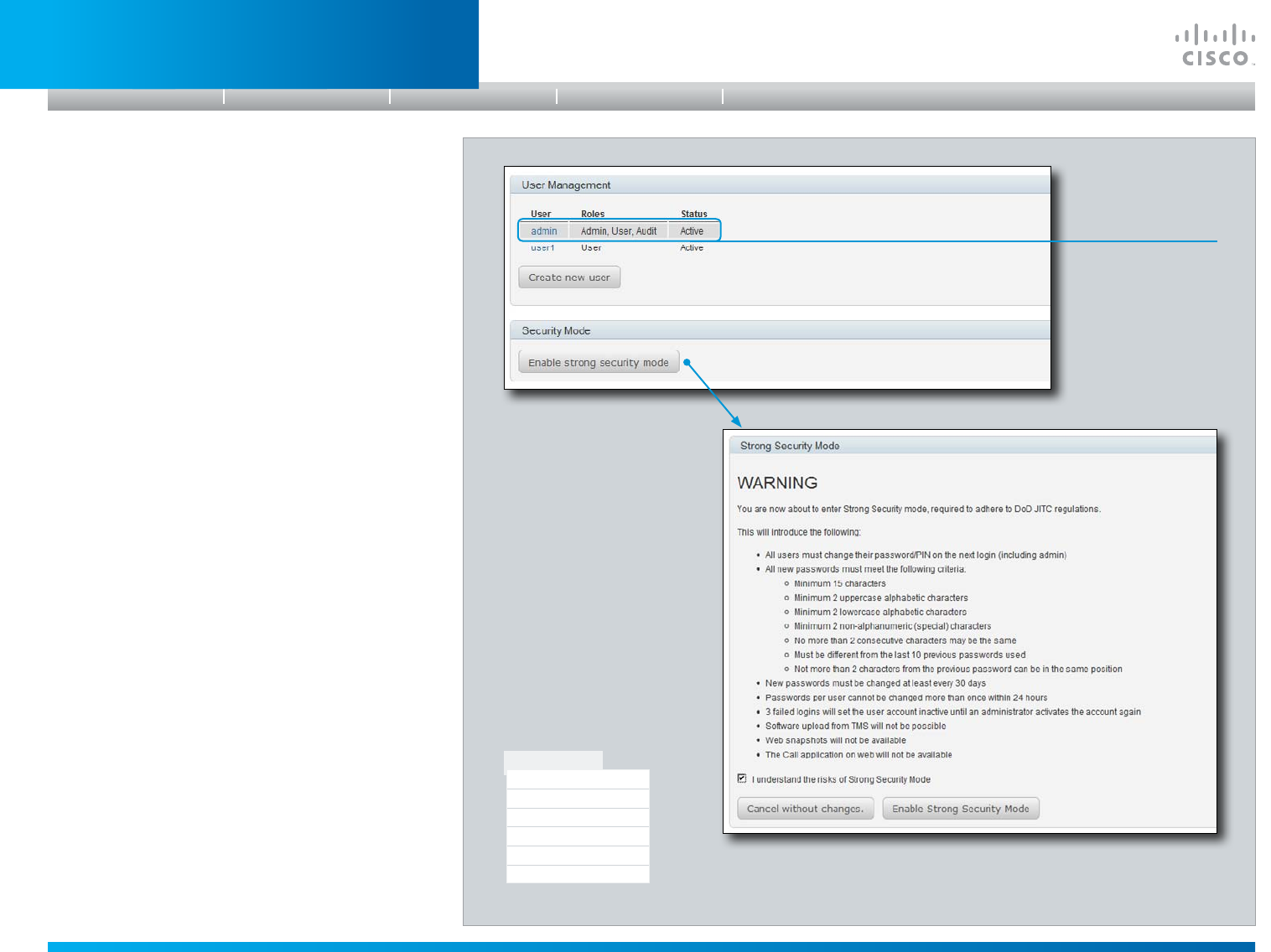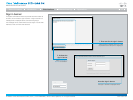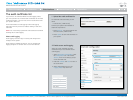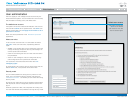
D14908.01 SX20 Administrator Guide (TC5.1) | 2012 FEBRUARY | © 2012 Cisco Systems, Inc. All rights reserved. www.cisco.com
23
Cisco TelePresence SX20 Quick Set
ADMINISTRATOR GUIDE
Useradministration
From this page you can manage the user accounts of your
video conference system. You can create new user accounts,
edit the details of existing users, and delete users.
Thedefaultuseraccount
The system comes with a default administrator user account
with username admin and no password set. The admin user
has full access rights, and itishighlyrecommendedtoseta
passwordforthisuser.
Read more about passwords in the Password protection
appendices.
Aboutuserroles
A user account must hold one or a combination of several
userroles. Three user roles exist, representing different
rights:
• ADMIN: A user holding this role can create new users and
change all settings, except the security audit settings. He
cannot upload audit certificates.
• USER: A user holding this role can make calls and search
the phonebook.
• AUDIT: A user holding this role can change the security
audit configurations and upload audit certificates.
It is important to note that these three roles have non-
overlappingrights.
An administrator user account with full access rights, like the
default admin user, must possess all the three roles.
Securitymode
You can enable/disable the strong security mode from this
page. You must read the warning carefully and check the
Iunderstand the risks... box before you can enable the strong
security mode.
Strong security mode sets very strict password requirements,
and requires all users to change their password on the next
sign in.
Software upload from TMS, web snapshots and making calls
from the web interface are prohibited in strong security mode.
The system comes with
admin as the default
user account. This user
has full access rights.
Defaultuseraccount
Maintenance
Software Upgrade
Certificate Management
Audit Certificate
User Administration
Restart
Factory Reset
Introduction
Table of contents
Web interface
Advanced settings
Appendices
Web interface


















